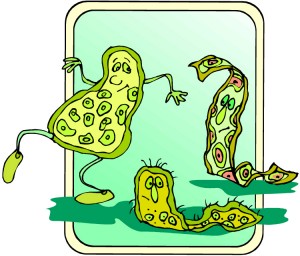The Hebrew Terms Relating to This Passage Defined
- Tzaraas: a skin disease (improperly translated as “leprosy” in some Bibles). This Hebrew word means “to be struck with leprosy (BDB)” or “to smite heavily, to strike, or scourged of Elohim” since the leprosy was viewed as a special divine infliction (Wilson’s Old Testament Word Studies, pp. 248–249) against such sins as jealousy (cf. Miriam, anger, lack of full compliance with Elohim’s commands (cf. King Uzziah), and covetousness (cf. Gehazi, TWOT, p. 777).
- Niddah: someone who is separated or menstruous
- Tumah: spiritual impurity
- Metzora: one with a skin disease; a contraction of the Hebrew word motzi and ra meaning “one who speaks slander”
The Issues Explained
Leviticus 12 and 13 deal with the subject of human contamination and delineates what could seem to be a lot of irrelevant and archaic, if not arcane, regulations relating to childbirth and skin diseases. Why is YHVH so concerned about “human contamination”? What is the larger picture here to help us gain understanding into the Father’s intent and heart behind these Torah-laws? The Jewish sages teach that man must not forget that even the gnats and earthworms preceded him in the creation. This is to teach man humility. But conversely, each stage of Elohim’s creation added something to that which had been created previously and that man was the final, crowning touch that would pull all the creation together to fulfill its purpose of spirituality in the performance of Elohim’s will. Man is therefore the last of the creatures to be created, but the first in significance because he is the purpose of it all and that if man is not worthy of his calling, then he has added nothing of substance to YHVH’s handiwork (The ArtScroll Tanach Series Vayikra, p. 184).
All this is to say that YHVH has a plan to redeem man from his sinful or depraved (animalistic) state. Man can choose to be elevated to this higher spiritual plane or to remain in a state no better than that of a gnat or a worm having added nothing to the creation’s spiritual betterment. The Jewish sages teach, and I think we can all agree, that the creation of human life is the most sublime phenomenon in the universe. Man is the only creature whom YHVH made in his own image. What’s more, when a husband and wife have children, they become partners with Elohim in creation (ibid., p. 185). But this is a mixed blessing, for it creates a blessing and a problem. While one new person is created Continue reading





